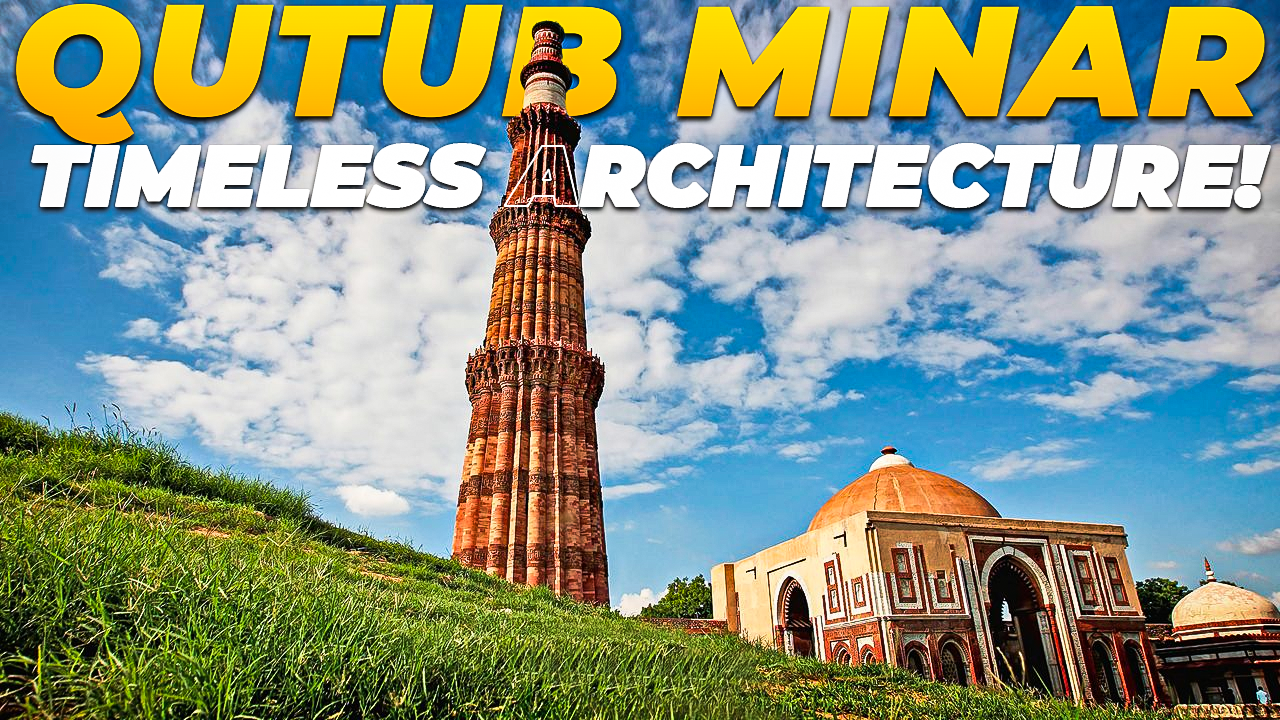Qutub Minar: Delhi’s Iconic Tower of Triumph

The Qutub Minar, a soaring symbol of Delhi’s rich history and architectural brilliance, stands as one of India’s most iconic landmarks. Towering at 73 meters, this five-story minaret is not merely an architectural wonder but also a testament to the cultural and political shifts of medieval India. As a UNESCO World Heritage Site, it continues to draw millions of visitors annually, offering a glimpse into the artistic ingenuity of the 13th century. Let’s take a closer look at the captivating stories, intricate designs, and enduring mysteries of this timeless masterpiece.
Origins and Historical Context
The story of the Qutub Minar begins in the wake of Mohammed Ghori’s victory over the Rajput king Prithviraj Chauhan, which marked the establishment of Muslim rule in Northern India. Qutb-ud-din Aibak, Ghori’s trusted general and the first Sultan of the Delhi Sultanate, initiated the construction of this minaret as part of a grand mosque, the Quwwat-ul-Islam (Might of Islam). This structure symbolized the triumph of Islam in the region.
While Aibak laid its foundation, subsequent rulers, including Iltutmish and Firoz Shah Tughlaq, expanded and completed the Qutub Minar. Its construction spanned decades, reflecting the evolving ambitions of the Delhi Sultanate and serving as both a victory tower and a call-to-prayer minaret. The Qutub Minar stands as a cultural bridge, merging Islamic architectural traditions with local craftsmanship, making it a unique Indo-Islamic creation.
Architectural Marvel: Design and Ornamentation
The Qutub Minar’s design is a stunning blend of Persian, Islamic, and indigenous artistry. Built primarily from red sandstone and white marble, it tapers from a base diameter of 14.3 meters to just 2.7 meters at the top. Each of its five stories is adorned with projecting balconies supported by intricately carved corbels known as muqarnas—a hallmark of Islamic architecture.
Floral motifs, geometric patterns, and Quranic calligraphy decorate its surface, creating a striking visual appeal. These inscriptions not only enhance the minaret’s beauty but also serve as historical records, offering insights into its construction and repairs under various rulers. The use of red sandstone for the lower stories and the incorporation of white marble in the upper levels reflect changing artistic preferences and resources over time.
Structural Ingenuity and Durability
Constructing such a towering structure in the 13th century posed incredible challenges. Without modern machinery, laborers relied on pulley systems and ramps to hoist heavy sandstone blocks. Skilled artisans, blending local Indian techniques with Persian influences, collaborated to achieve its intricate design.
The Qutub Minar’s broad base and tapering design ensure stability, while interlocking stones enhance its durability. Its cylindrical shape also provides resistance to seismic activity—an essential consideration in a region prone to earthquakes. The spiral staircase, originally containing 379 steps, was once accessible to the public but has been restricted since a tragic stampede in 1981.
The Qutub Complex: A Treasure Trove of History
The Qutub Minar is part of a larger complex brimming with historical and architectural treasures. The Quwwat-ul-Islam Mosque, one of India’s earliest surviving mosques, was constructed using materials from demolished Hindu and Jain temples. This practice has sparked debates about cultural synthesis versus destruction, reflecting the socio-political complexities of the era.
Nearby stands the Iron Pillar, a 7-meter-high metallurgical marvel from the Gupta period, renowned for its corrosion resistance. Historians believe it was relocated to the complex by Iltutmish, although its exact connection to the minaret remains a mystery. The Alai Darwaza, a grand gateway built by Alauddin Khalji, and several tombs further enhance the historical depth of the site.
Lesser-Known Stories and Mysteries
The Qutub Minar is shrouded in intriguing tales. One fascinating aspect is its possible use as an astronomical observatory. Some historians suggest its height and orientation allowed for celestial observations, though this theory remains debated. Additionally, inscriptions on the minaret reveal personal details, such as the names of artisans and overseers, offering a rare glimpse into the lives of those who built it.
The Iron Pillar, standing within the complex, adds another layer of mystery. Despite being over 1,600 years old, it remains rust-free—a feat that continues to puzzle metallurgists. These lesser-known stories contribute to the allure of the Qutub Minar, making it not just a monument but a portal to the past.
Symbolism and Modern Significance
The Qutub Minar is more than a physical structure; it is a symbol of cultural synthesis and political power. Its design reflects the dialogue between Islamic and Indian traditions, with Persian floral and geometric motifs blending seamlessly with elements of Indian temple architecture, such as lotus patterns. This fusion highlights the adaptability of the Delhi Sultanate rulers who sought to integrate local traditions to legitimize their authority.
Today, the Qutub Minar stands as a symbol of heritage and resilience. It has witnessed centuries of change—from the Delhi Sultanate and Mughal rule to British colonialism and Indian independence. Designated a UNESCO World Heritage Site in 1993, it continues to captivate visitors, reminding the world of India’s enduring legacy and its timeless dialogue between tradition and innovation.
Conclusion
The Qutub Minar is a towering testament to Delhi’s rich history and architectural brilliance. Its construction, spanning multiple rulers and decades, showcases the ambition and artistry of the Delhi Sultanate. From its intricate carvings and Quranic calligraphy to its enduring mysteries, this Indo-Islamic marvel embodies a unique blend of cultural influences.
As you explore its surrounding treasures, including the Iron Pillar and the Quwwat-ul-Islam Mosque, it becomes clear that the Qutub Minar is more than a monument—it is a symbol of cultural synthesis, triumph, and innovation. Next time you’re in Delhi, be sure to visit this iconic site and immerse yourself in its stories. What other architectural wonders of India inspire you? Share your thoughts in the comments below!
